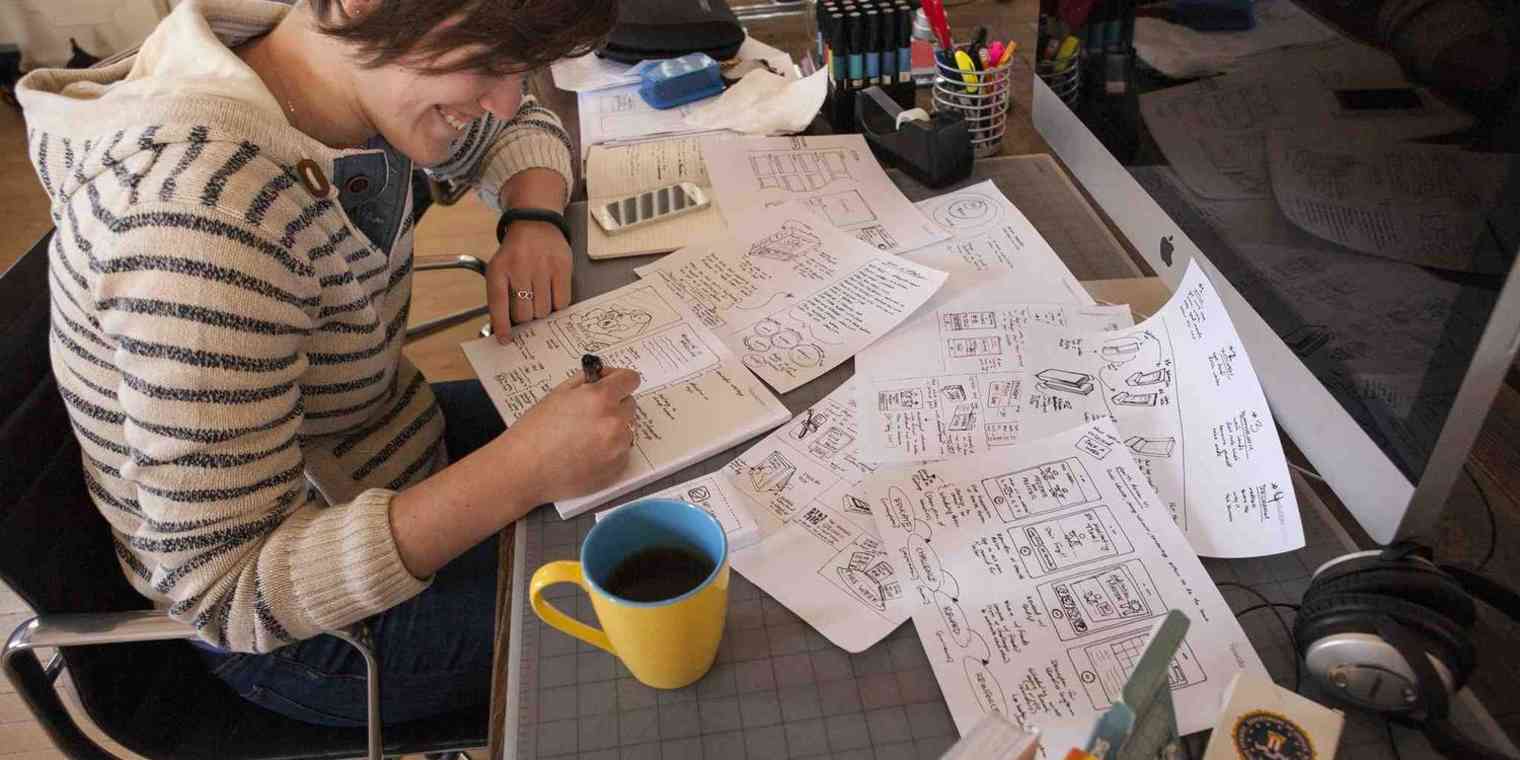It's been said many times that to have lots of good ideas, we need to have lots of bad ones, too. We need lots of ideas, period. What people often skip over when talking about producing ideas is the effort and skill required to filter out the bad ones and recognize the ones worth pursuing.
Someone asked me where I get all my good ideas, explaining that it takes him a month or two to come up with one and I seem to have more than that. I asked him how many bad ideas he has every month. He paused and said, 'None.'
How Ideas are Made
If you've heard anyone say "nothing is original", you might feel frustrated when it comes to generating new ideas. What this phrase is really getting at is that generating ideas is actually a process of finding new connections among old ideas or concepts.
Every artist gets asked the question, 'Where do you get your ideas?' The honest artist answers, 'I steal them.'
When we sit down to try thinking up new ideas, it doesn't feel like we're connecting things. It feels like a strain—like you're trying to create something out of nothing. But the truth is, ideas really do come from connections.
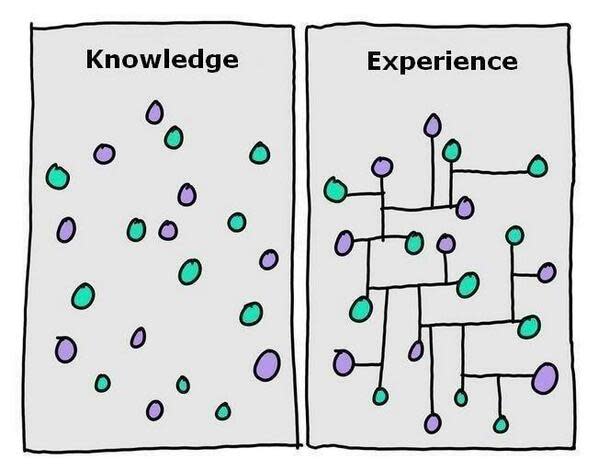
This image sums it up perfectly. The more experiences we have, the more we have to draw from when we're looking for idea inspiration. But true creativity is the act of connecting those dots.
Creativity is just connecting things. When you ask creative people how they did something, they feel a little guilty because they didn’t really do it, they just saw something.
Maria Popova, creator of the popular site Brain Pickings, calls this process "combinatorial creativity". She says, "… in order for us to truly create and contribute to the world, we have to be able to connect countless dots, to cross-pollinate ideas from a wealth of disciplines, to combine and recombine these pieces and build new castles."
More Bad Ideas Equals More Good Ideas
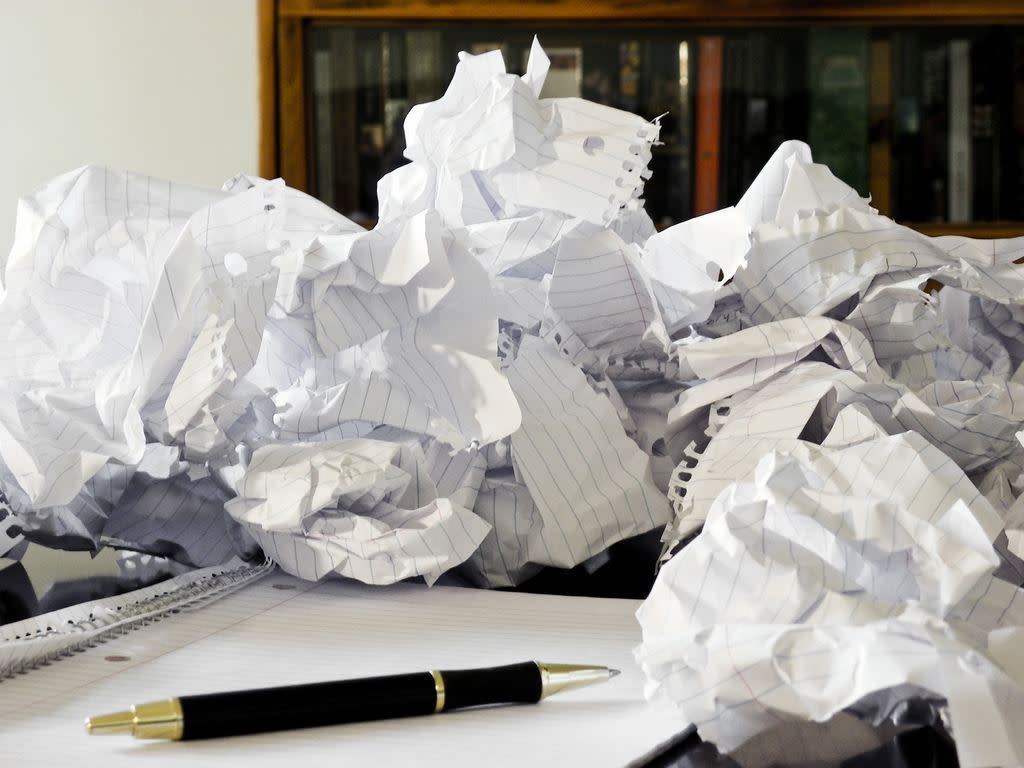
Steve Jobs suggested that creativity works just like it's shown in the above art by Hugh MacLeod. He said creative people are able to "connect experiences they've had and synthesize new things." More than that, Jobs said more creative people who come up with ideas consistently have "had more experiences or they have thought more about their experiences than other people."
So to have more ideas, we first need more experiences to draw from. Then we need to make use of all that inspiration by having more ideas—good and bad.
As Seth Godin says, "you can't have good ideas unless you're willing to generate a lot of bad ones."
If we think of the process of ideas—going from initial spark of inspiration through to execution—as a funnel, we can imagine this step as filling up the top of the funnel with as much as we possibly can. After all, the more we put into it, the more good ideas can make it through the bottom of the funnel to become new products, businesses, or content.
Create a Safe Environment
One of the pitfalls of traditional brainstorming sessions is that we clam up and don't contribute because we're afraid of being criticized. Zapier co-founder Wade Foster wrote an insightful post this time last year about how the writers of the hit show Breaking Bad consistently came up with fresh ideas. One of the secrets to their success was ensuring their writers' room was a safe place, free from criticism.
"If you feel like you're going to be criticized for something you say, then you're not going to say anything. You're going to shut up," said Thomas Schnauz, one of the show's writers, in an interview with Fresh Air. "You've got to be free to say any dumb thing, because a lot of times when you say something stupid, a good idea arises from it."
You've got to be free to say any dumb thing, because a lot of times when you say something stupid, a good idea arises from it.
Rather than criticizing ideas they didn't like, in the writers' room they focused on getting ideas out in the open so they could build on them.
"Instead of trying to negate what the other person is saying, you try to build on it," said Peter Gould, another of the show's writers.
Scratch Your Own Itch
Stef Lewandowski, the founder of app maker Makeshift, wrote about his own process for funneling ideas which has led him to create around 50 different products in 18 months. One thing he mentions that worked best for him when thinking up new ideas for products to build was to pay attention to his own experiences.
"Most of the ideas related to my own particular, personal observations on what I needed or what I saw was missing in the world," he wrote. "I can’t really see any other way to 'have lots of ideas'. You can’t imagine what other people will want as well as you can imagine what you might want."
Lewandowski said this applied to the rest of his team, as well, and they found that products they built which solved their own problems also happened to be the most successful.
"When we weren’t scratching an itch, the idea didn’t seem to stick," he wrote.
Seek More Experiences
Like Jobs said, the people who are best at seeing new connections are those who have more experiences to draw from. This also leans on Lewandowski's point that scratching your own itches often generates the best kind of ideas. The more experiences we have, the more itches we'll discover and want to scratch.
In my own work, many of the best ideas start with a personal experience or problem, followed by a group effort to debate, discuss, and expand on that initial spark. Studies have even shown that encouraging groups to debate their ideas increases the number of ideas they come up with.
Recognize Good Ideas
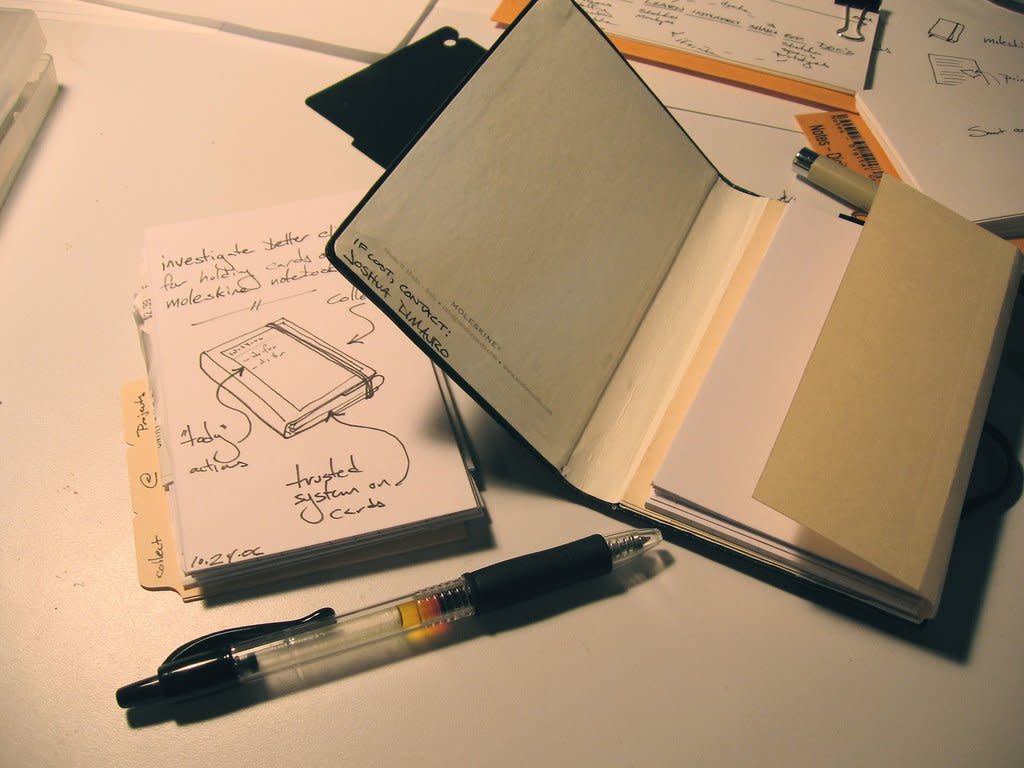
And finally we come to the hardest part of the process. Recognizing which ideas are worth pursuing, and which should be dumped or put on hold. I'm not sure there's a solid answer to how you can go about this, but I picked up some clues to perfecting the process.
How Passionate are You About the Idea?
Lewandowski suggests using passion as a filter, which I'm definitely on board with. If you're looking at a huge stack of ideas (hopefully by this stage you are), you have to be ruthless about which ones you choose to pursue—we'll never find time to execute on every idea we have. And anyway, you'll probably find (at least I often do) that after giving them time to settle, you'll be much less excited about some of the ideas you've noted down.
For Lewandowski, this worked as a kind of process of elimination.
"Many of the ideas at the fat end of the funnel didn’t get much further because that passion wasn’t there — either for me or for others in the room," he wrote.
But I also love that Lewandowski pointed out using passion as a filter for your ideas doesn't necessarily mean you can only work on life-changing ideas. You just have to care about them enough to bring them to life.
"Not everything that goes into the wide end of your idea funnel should be utterly change-the-world-I-have-to-make-this-happen-at-all-costs, yet at some point in that funnel from idea to product someone will have to be personally convicted of the idea and want to fight for it," he wrote.
Kill Your Darlings, but Not Too Soon
You're going to have to say "no" to some ideas you want to execute. It's pretty much inevitable. It's important to get used to looking at your ideas objectively and choosing the ones that have the best chance for success or support your goals best, and letting go of others (or at least putting them aside for a while).
Having said that, sometimes you need to give your ideas room to breathe before you can assess them. For Lewandowski, he was building new products constantly, and often several at a time. He said one of the hardest parts of the ideas funnel, and one he still hasn't solved, is giving each project the right amount of time before assessing whether to continue working on it or not.
"If you don’t give an idea long enough to gain traction, to work out what it is, to really go deep on it, you’re limiting yourself to working on very much surface-level problems," Lewandowski wrote.
One way to help you dig into an idea more without spending too long on it is to flesh it out before pitching it to your team. Sharing an idea with a mockup, a sketch, an outline of the steps involved to realize your idea, or some examples of similar projects. Having some more tangible aspects to your idea when pitching it to others can help you dig into the specifics faster and understand more quickly what's going to be involved and whether it's worth your time.
Tools to Keep Track of Your Ideas
It can help to have tools set up so you can easily dump or save ideas as they come up. A paper notebook is one of my favorites, but I also like using digital tools that make it easy to save images, links, and connect ideas together. Plus, they're with you everywhere you go.
Saving Ideas
Here are a few tools I find useful for saving and collecting ideas.
Wunderlist
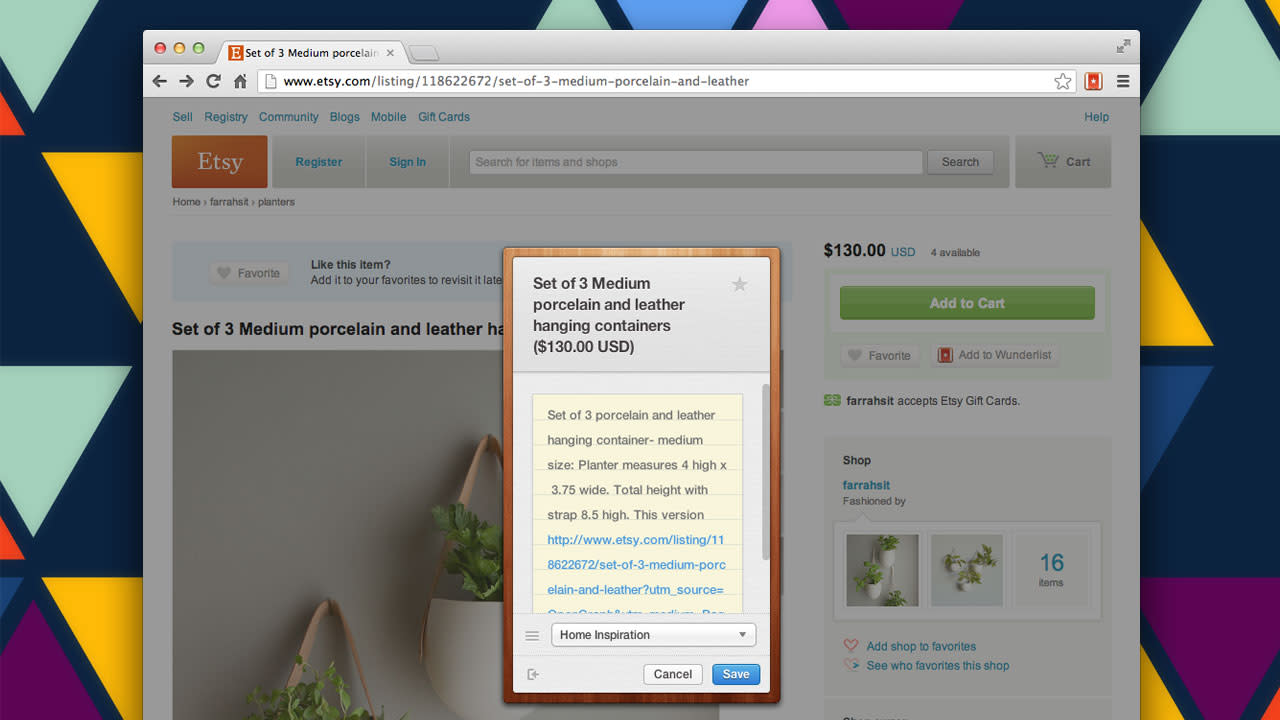
Wunderlist has a handy browser extension that makes it easy to grab a link, title, and description of the page you're looking at. This is great for collecting articles, studies, and blog posts I find that could become inspiration for my own writing later on.
Evernote
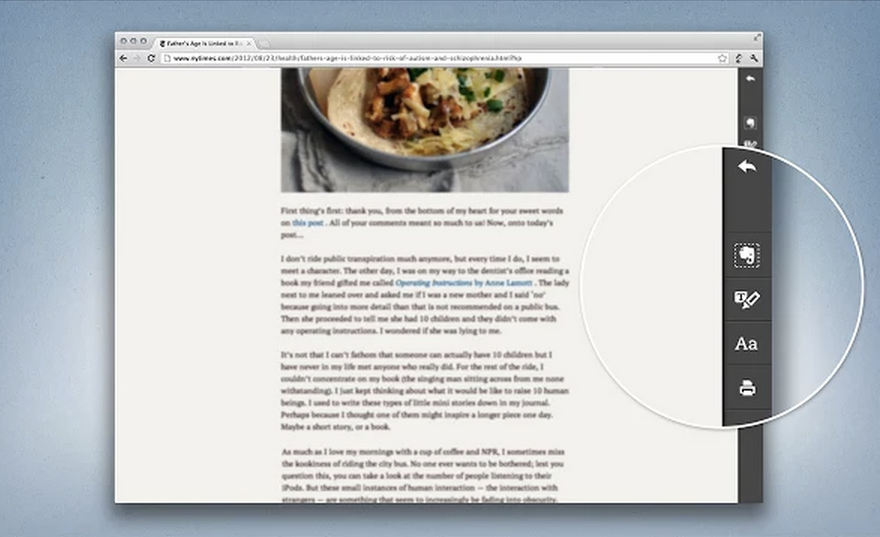
Of course, I have to mention Evernote. I like to use Evernote's Clearly browser extension to make articles on the web more readable (it strips ads, sidebars, and other content away, just like Instapaper does, but for immediate reading). Clearly also lets you clip content to Evernote and it has a highlighter feature so I can highlight useful points in an article, and save the whole article to my Evernote account to come back to later.
Fetchnotes
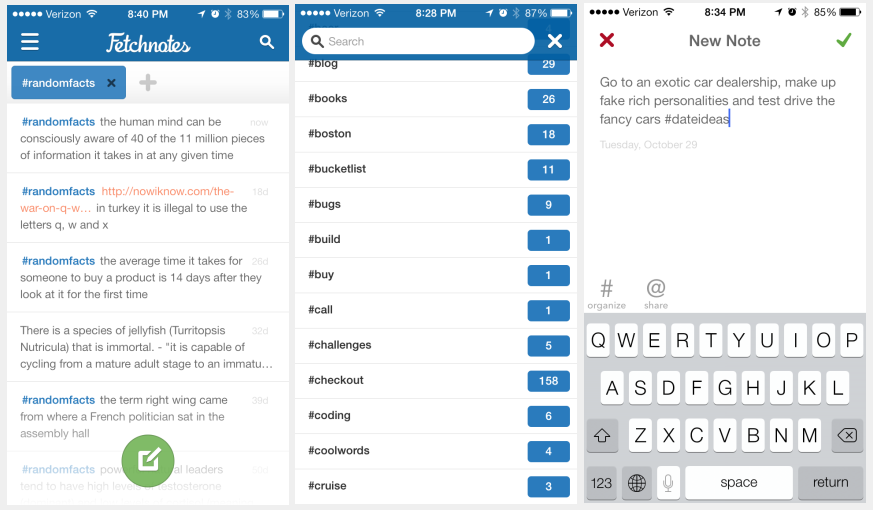
If you use Google Chrome, you can install the Fetchnotes web clipper to quickly save links to pages you're browsing and add a note as you save it. I love that Fetchnotes lets you type in hashtags that are saved to your account so you can filter and search by tags later. This is a really quick and easy way to save ideas and categorize them at the same time. You can also log into Fetchnotes on the web or your phone and add notes with hashtags quickly when an idea pops up.
Sharing ideas
If you're working with a team it can be extremely beneficial to share your ideas with each other. Bouncing off other people and building on each other's ideas is one of the best ways I've found for filtering through the noise and finding ideas worth pursuing.
Slack
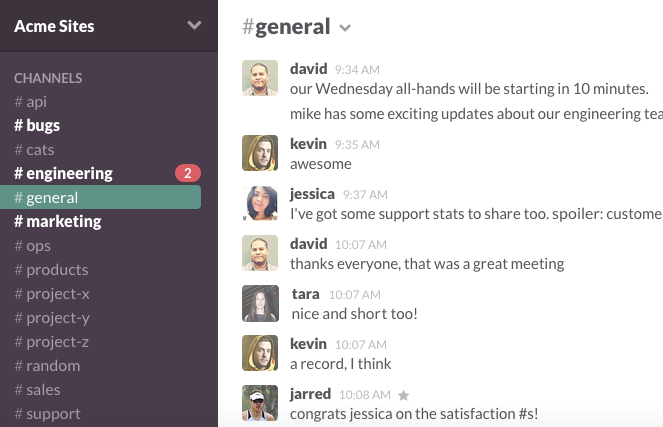
For team chat, it's hard to go past Slack. You can set up channels for different teams, types of work or discussions, so you can have a whole channel dedicated to ideas. Or, you could have a channel dedicated to design, and another to marketing, and ideas could be dumped into the relevant channels. Slack lets you work in whichever way suits you best, including hooking in the other apps you use via Zapier and native integrations.
Create Xero invoices when Qwilr projects are accepted
Slack also has a great search feature so you can go back and find old discussions about ideas. This can really come in handy if you discuss an idea but leave the execution for a while, and then want to reference the original discussion again.
Pie

Pie lets you chat with your team like Slack does, but each chat is focused on a particular topic or item. If you'd rather have all of your ideas, links, and inspiration separated out with their own discussions, Pie is set up perfectly for that.
Trello
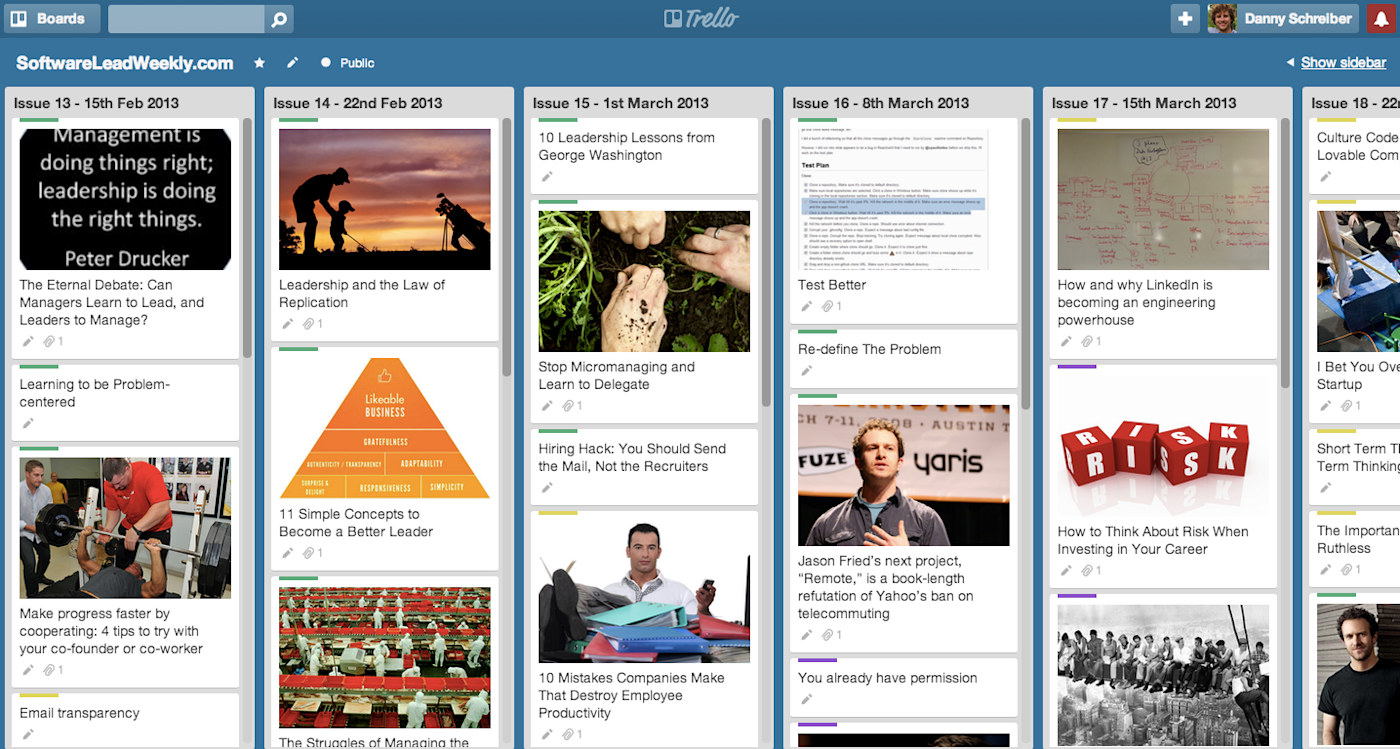
When you're moving your ideas through a pipeline, Trello makes it really easy to visualize the status of any idea you're working on. It lets you add colored labels so you can easily see the status at a glance, and you can use the comments to discuss and expand on ideas with your team. To stay in the loop on new ideas, the app offers notifications, but to really be sure you don't miss one you can enable up a Zapier automation.
Idea generation can be painful when you're not sure how to go about it. I've found that the more I develop a process for it, and the more I practice collecting ideas and inspiration every day, the easier it gets.
I hope this post will help you come up with many more ideas!
You might also enjoy this post: "6 Tools to Help Turn Your Team’s Daily Reading into Big Ideas".
Credits: Sketch photo courtesy Juhan Sonin. Connections by Hugh MacLeod. Crumpled paper courtesy Sharon Drummond. Notebook photo courtesy Josh DiMauro. Wunderlist screenshot courtesy Lifehacker. Fetchnotes screenshot courtesy TechFaster
